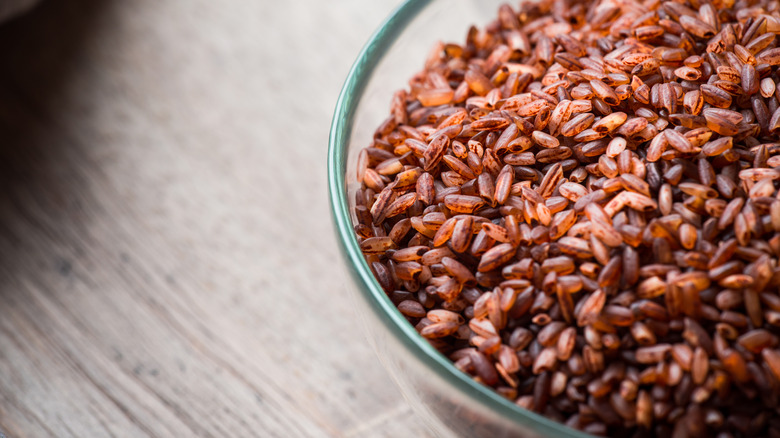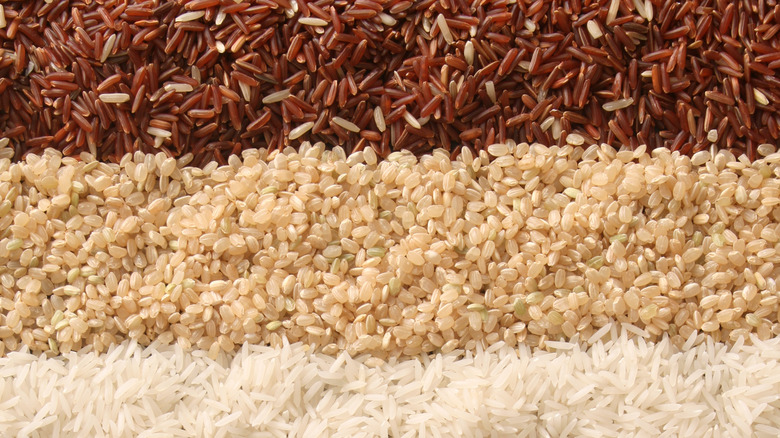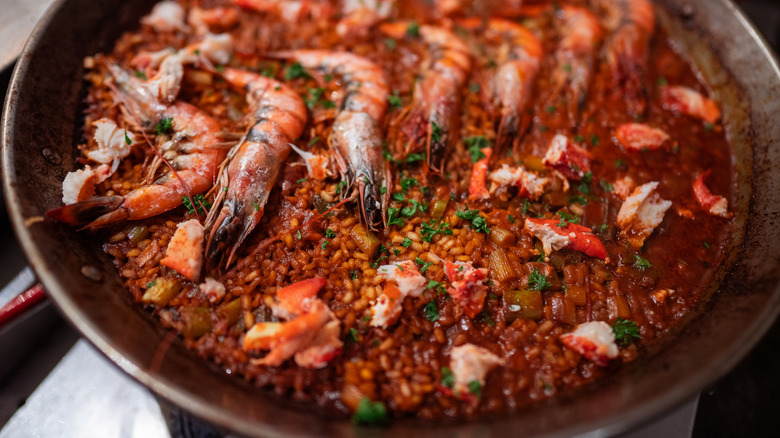What Is Red Rice And How Do You Cook It?
If you've grown up eating white rice, especially that boxed kind, red rice might be unfamiliar. So, take this as a sign that it's time to expand your rice horizons because there is a literal world of it out there to explore, and the varieties come in every color of the rainbow. Instant rice this is not.
Red rice has a vibrant ruby hue due to the presence of chemicals known as anthocyanins, essentially coloring agents, in each grain. To preserve its color, the rice is usually sold "whole grain," which leaves the color and more of the nutrition and fiber intact as well. Put all that together and you have a visually pleasing, nutritious rice that also packs a nuttier flavor. Whether you want to wow your friends with a stunning rice pilaf, add color to a salad, or pair with a coconut curry, there are innumerable variations to try out with red rice. Your creativity is the key.
Red rice versus other varieties
There are more than 120,000 varieties of rice in the world; red rice makes up just a few of those. There are numerous kinds of rice from around the world that could fit the description of "red rice," but there are two that are commonly cultivated: weedy Asian red rice and African red rice. Within each type, there are multiple others — for example, Himalayan red rice, Thai red cargo rice, and more. Depending on the exact variety of red rice that you purchase, things like grain size, shape, color, and flavor can differ.
In addition to the fiber from the bran, anthocyanins provide plenty of nutritious benefits to anyone who eats them. Anthocyanins have also demonstrated anti-inflammatory and antioxidant effects when consumed, according to a 2020 review published in the scientific journal Molecules. Red rice is also more nutritionally dense than white rice because it is a whole grain, which means that the fibrous, outer layer of the grain (known as the bran) is still intact. White rice isn't naturally white, but milled down until the bran is removed, leaving only the white interior, known as the endosperm. Whole grain rice varieties can be good sources of fiber, B vitamins, magnesium, and other minerals.
Prepare red rice like a champ
So, what do you actually do with red rice? Really, almost anything, but there are some important things to consider when preparing it. First, familiarize yourself with the variety of red rice that you're using. Depending on what it is, you can expect things like cooking time, water ratio, and flavor to change slightly.
Red rice is whole grain, so it will require more water than white rice, depending on the size of the grain. Remember to take your time; in addition to more water, whole grains also take longer to cook. Remember not to stir your rice because this can lead to uneven cooking.
Try incorporating red rice into your favorite dishes like rice pilaf with nuts, red onion, and green grapes. You can also create dishes centered on the colors of your ingredients: A red rice salad with your favorite fresh greens makes a vibrant side dish. There are plenty of creative rice dishes to try by substituting red rice in place of another variety. Red rice is delicious, dynamic, and nutritious, allowing you to add a splash of color to one of your favorite rice dishes or totally reinvent it.



